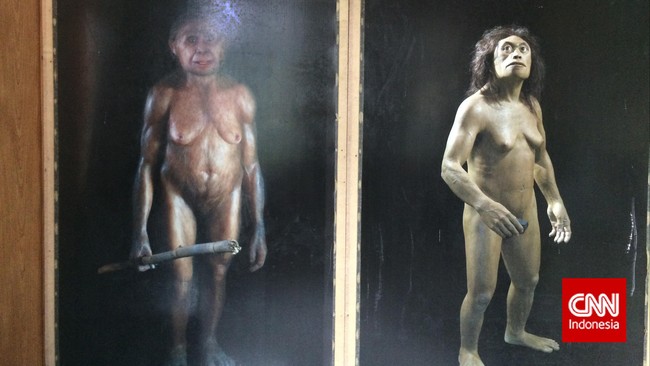
Jakarta, shesocial Indonesia
–
Team
archaeologist
From RI and Australia recently discovered equipment from stones that were allegedly belonging to mysterious neighbors
Homo floresiensis
or
hobbit man
From Indonesia.The stone tools are thought to belong to other ancient humans who live in Sulawesi Island.
This discovery included in the journal Nature entitled ‘
Hominins on Sulawesi During the Early Pleistocene
‘which was published on Wednesday (6/8).According to the ancient human researchers managed to cross to the island of Sulawesi accidentally.
“It is very unlikely that this ancient hominin has the cognitive capacity [especially the sophisticated planning capabilities] needed to create a boat,” said Archeologist and Expedition Leader, Adam Brumm, launch
Sciencealert
, Thursday (7/8).
“Most likely Hominin reaches Sulawesi accidentally, most likely as a result of ‘rafting’ above the natural vegetation mattresses. It is estimated that mice and monkeys do sea crossings from mainland Asia to Sulawesi in this way,” he continued.
The researchers found seven layered stones in Sulawesi.The stones are at different depths underground.
However, based on local sandstone and pig fossils that are nearby, these tools are estimated to be between 1.04 million years old to 1.48 million years old.
If true, the artifacts can represent the oldest evidence of human activity on Wallacea, a series of Indonesian islands that separated the Asian and Australian continent for millions of years.The identity of the isolated tool maker is still a mystery.
Brumm has examined ancient hominins in the region for decades.At present, he leads the latest archeological expedition in Sulawesi with Budianto Hakim from the Indonesian National Research and Innovation Agency (BRIN).
Archeologist Debbie Argue, who was not involved in the discovery, said that this finding was very important, because it added to the shocking facts that the initial Hominin Pleistocene was able to cross the ocean.
“With evidence of the existence of hominins on three islands that have never been connected to the main land – Flores, Luzon, and now Sulawesi – Southeast Asian Islands began to be seen as an extraordinary border for human evolution,” Argue said.
Until now, the oldest evidence of stone equipment at Wallacea, which is estimated to be 1.02 million years old, originated from Flores, East Nusa Tenggara.
Flores is the location of the archeologists to find
Homo floresiensis
short or known as a hobbit.Hominin as high as one meter with a brain the size of a grapefruit is surprising the world when found, because it is not similar to other ancient humans.
Fossil
H. Floresiensis
aged up to 100,000 years ago, but his ancestors on the island were estimated to be 700,000 years old.1.02 million years old stone tool in Flores is likely to be made by the ancestors, whether offspring
Homo erectus
or other hominin species in mainland Asia.
So far, archaeologists have not found hominine fossils in Sulawesi, but evidence of stone tools shows their whereabouts.In addition, archaeologists also do not know whether the Sulawesi population is associated with hominine in Flores.
Even so, Mike Morwood, one of the inventors of Hobbit in 2003, believes that Sulawesi is the key to understanding the origin
H. Floresiensis
.
“We always suspect that Hominin has settled in Sulawesi during a very long period, but until now we have never found clear evidence,” Brumm said.
Inspired by Morwood’s thought, Brumm suspected that Sulawesi had been a bridge to Flores from mainland Asia, which had stretched to Java and Kalimantan.
Archaeologists are now planning to find direct traces of the makers of mysterious tools in Sulawesi.
“We also work on much younger sites that we hope can provide insight into what happened to this ancient humans when our species arrived on this island at least 65,000 years ago,” Brumm said.
(DMI/DMI)
[Gambas: shesocial video]
Read More: 10 of the Indonesian League youngest debutant: Will it break in the Super League?
Read More: Activist 98 Affirms nothing is set aside in amnesty and abolition
